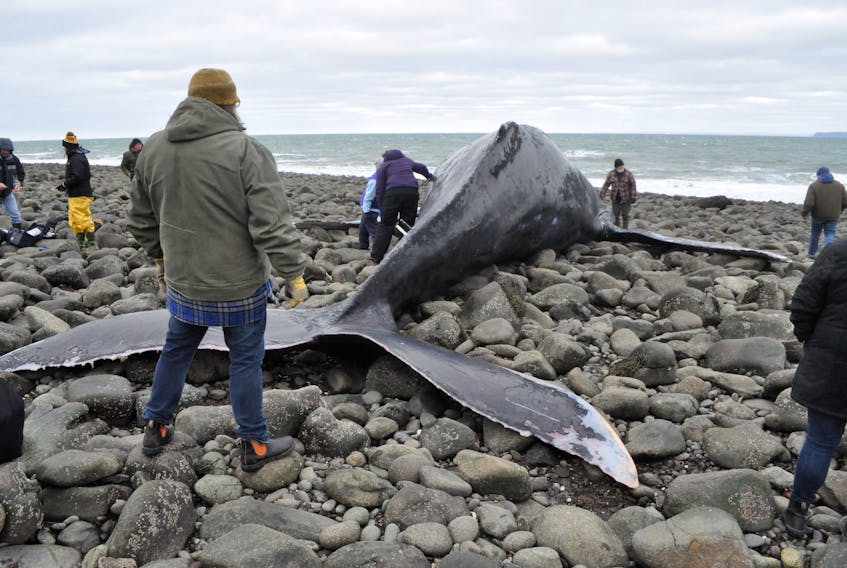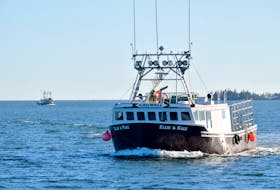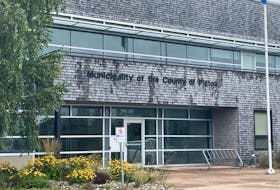HARBOURVILLE – There will be no necropsy completed on the humpback whale carcass found beached March 18 near Harbourville.
The Marine Animal Response Society, or MARS, has confirmed that the Department of Fisheries and Oceans has determined the body cannot feasibly be moved, meaning a necropsy cannot happen.
MARS response coordinator Andrew Reid said the March 20 examination of the carcass revealed it was a young male, and confirmed it was emaciated. Samples were also taken to assess the thickness of the animal’s blubber, but that a more detailed account of what specifically led to the whale’s death will not be possible.

“It’s an involved process that can be quite costly, but it is necessary to finding out what really happened here. At this point, we won’t be able to find that out,” he said.
Early photos key to whale analysis: Reid
Reid said there were signs Tuesday that the whale was emaciated that were not derived from the blubber’s thickness, which has not yet been compared to that of a healthy humpback whale.
By the time the team arrived at the beach, the carcass had started producing decomposition gasses, and had begun taking on a different shape.
It was thanks to photos submitted by people from the day it was found that the society was able to deduce its emaciated state.

“Certain muscles running down the back length of the animal provide power for locomotion – there should be large bulges,” he said, adding that the submitted photos were extremely important in this case, and that without them, this conclusion wouldn’t have been certain.
“This animal had instead two long indents running down the same area, showing us the muscle had atrophied and sunken, something that happens only in really thin animals.”
No confirmation carcass will be removed
With a necropsy not happening, Reid said it also looks likely the whale carcass will remain on the beach, unless swept back into the ocean by the tide.
And with decomposition gasses building up, there is a chance the body could explode.

Reid said the other samples collected Tuesday will be used for research by scientists and compared to other samples from healthy humpback whales.
They will also likely be used to help assess the genetic variation existing in the humpback population, with a high percentage of variation indicating a healthy population.
DFO has not immediately responded to requests for comment.









